Renge / Hachijo Island ramen smolders with local green pepper
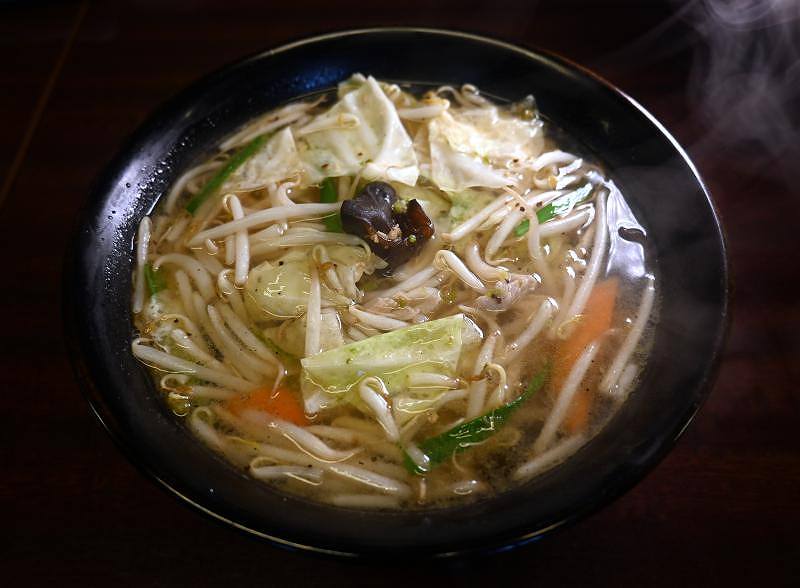
Kara tanmen that will make you sweat and cry. ¥1,100
15:42 JST, October 13, 2022
The Tachibana Maru, a large passenger ship of the Tokai Kisen shipping company with an impressive yellow hull, departed from Takeshiba Pier in Tokyo at 10:30 p.m., right on time. The final destination was Hachijo Island in the Izu Islands, about 280 kilometers to the south of central Tokyo. Waves were high and winds were strong due to Typhoon No. 14, which had just passed over the Japanese archipelago. Lying in a second-class berth, I enjoyed the half-day cruise with its occasional bumps and shakes, before landing on Hachijo Island for the first time in my life. One of my objectives was to try kara (spicy) tanmen, a seriously hot ramen prepared with the island’s green peppers, at the Renge ramen shop.
-

A short time after leaving Takeshiba Pier, the boat passes under the Tokyo Rainbow Bridge. The view of Tokyo at night is beautiful.
-

People disembarking from the Tachibana Maru upon arrival at Hachijo Island.
-

The Tachibana Maru docked at Hachijo Island’s port
-

The bed in the special second-class cabin where I stayed. There is no window.
-

A large signboard explains the basics of the island’s local dialect next to where I disembarked from the ship.
“Welcome to Hachijo Island!” said Kunimi Yamaguchi, the cheerful and upbeat owner of the shop, welcoming me in a black T-shirt, denim shorts, and white boots. The island’s rainy weather had me out of spirits, but this encounter all at once refreshed me. Sept. 22, the day I visited the shop, was Yamaguchi’s 58th birthday, and she seemed to be in full bloom. I immediately ordered the signature dish, kara tanmen (¥1,100).
Tanmen is a kind of ramen where stir-fried vegetables and meat are placed on top of noodles. Yamaguchi put a big helping of vegetables in a large wok and began to stir-fry them, producing a loud sizzling sound. In the middle of the stir-fry, she added about two tablespoons of green pepper paste. Only then did she close her eyes and turn her face away. “If I don’t do this, the smell will be so strong that it will make me cry,” she said. I was excited to see how spicy it would be.
-

Exterior view of Renge
-

Yamaguchi stir-frying vegetables
-

Yamaguchi closes her eyes and puts the green pepper paste into the wok.
-

The kara tamen is ready to eat.
The kara tanmen, when ready, was placed on the table in front of me. It was a clear, salt-based soup that did not look spicy at all. But when I took a sip of the soup, I was hit with an intense pungency. And it was not just my taste buds that were affected. Tears began to form in my eyes, and sweat poured out of the top of my head like a waterfall. I was happy to find the soup’s spicy punch was the real thing. It stimulated more than just my mouth. My whole body felt almost numb. “I knew it would be spicy,” said Yamaguchi, who was watching me with a smile on her face. “I can make it twice or even three times as spicy, but I don’t recommend it because it’s dangerous.”
-
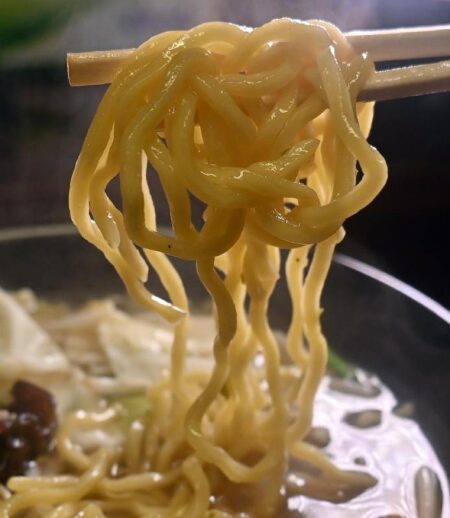
The thick noodles are chunky and firm and go well with the soup.
-
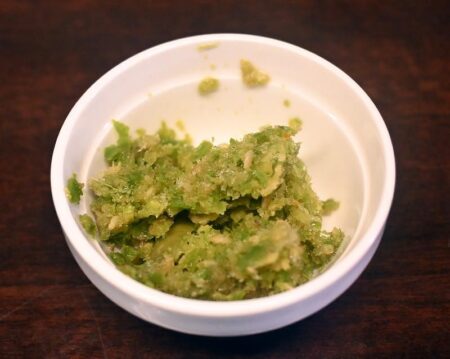
Green pepper paste. This is for one bowl of kara tanmen.
-
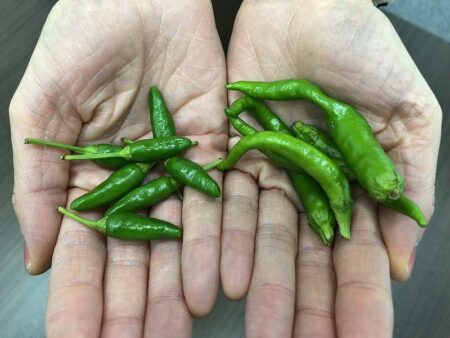
Hachijo Island’s green peppers, left, are smaller than most, but very hot!
-

Noodles made from Hokkaido wheat
Wiping sweat from my face with a handkerchief, I ate the noodles. The thick noodles, made from Hokkaido wheat shipped in from the prefecture, have a firm, glutinous texture that goes well with the salt-based broth. Vegetables, including bean sprouts, cabbage, garlic chives, onions, carrots and kikurage mushrooms, garnish the dish. All were fresh and delicious. As I continued eating, my senses grew numb and I could no longer tell how hot or spicy the food was, but when I finished eating and the sweat subsided, I felt refreshed, as if I were in a sauna or had just gone for a jog. The overall flavor was light and refreshing, so the meal did not sit heavily on my stomach. I highly recommend this kara tanmen to anyone who wants to feel like the blue sky after a typhoon.
-
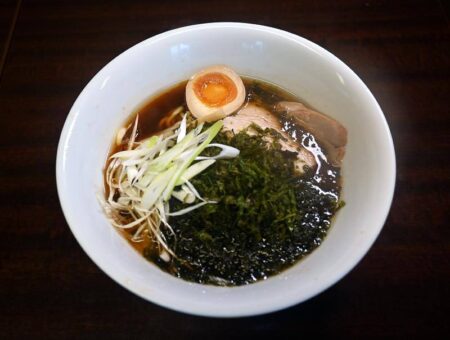
The soy sauce-based island nori (seaweed) ramen is also popular. ¥1,000.
-

Local seaweed is used for the ramen.
-
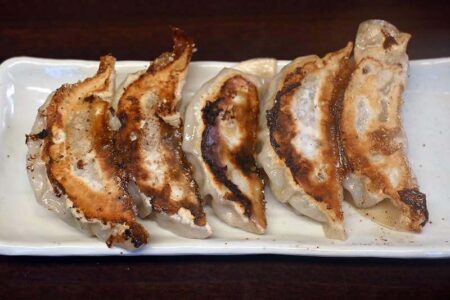
Ao-ton gyoza with green pepper paste. ¥500.
-
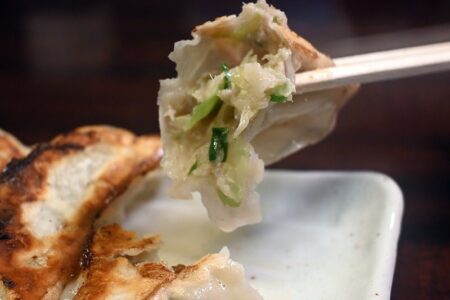
Green pepper paste is kneaded into the filling.
According to Yamaguchi, green peppers, known locally as “ao-ton,” are also added to sashimi soy sauce (shoyu). Since some peppers are very hot and some are not so hot depending on the individual pepper, she makes a paste with more uniform heat to add to her ramen soup by blending a large number of green peppers in a blender. To the paste, she adds island shochu alcohol, a local delicacy, to give it a touch of island flavor.
Suddenly running an izakaya tavern
-

Kunimi Yamaguchi, full of energy
-
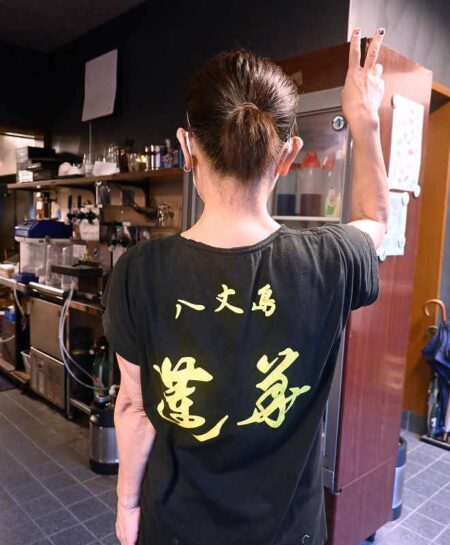
Yamaguchi wears one of the shop’s custom T-shirts when she works.
-
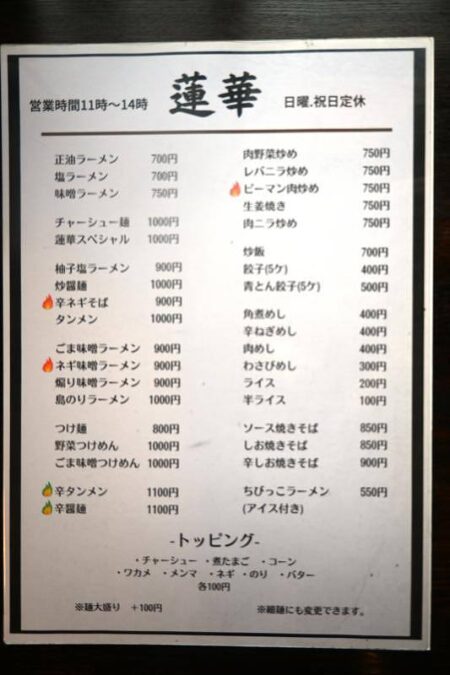
Renge’s menu
“My ex-husband, who was originally a chef of Japanese cuisine, started an izakaya, but he disappeared after he found a woman. That’s why I divorced him.” Yamaguchi dove into such a heavy story with such simple ease.
Born and raised on Hachijo Island, married on the island, and blessed with three children, Yamaguchi’s life took a drastic turn after her husband left. “I took over the izakaya as a housewife who had never served beer or cooked meals for izakaya customers before, so I was in a panic every day,” she said. “I had debts from when my ex-husband started the izakaya, and I had to make a living, so I was desperate. That was about 27 years ago.”
But then came the kindness of the island’s residents. Customers who were like family came to the izakaya and helped her with even the smallest details, such as how many pieces of fried octopus should be served on a plate. The izakaya prospered. In the midst of all this, she started offering ramen, and it was well received. About 20 years ago, she came up with the idea of making ramen that was unique to Hachijo Island, a spicy ramen with local green chili peppers. However, the ramen did not sell at all at first. Then after about a year of serving it, young women living in the island started coming to eat it, word spread, and the ramen took off. The izakaya became a ramen shop when it moved to its current location about seven years ago.
Knowing Hachijo Island inside and out, Yamaguchi, with the help of a local photo studio, Hachijo Shashinkan, has been creating her own YouTube programs to showcase the island’s charms. “Even if you came to the island as a tourist, you wouldn’t know where to go or which restaurants to drink at in the evening,” she said. “I have my own network of contacts on the island and can recommend little-known spots where islanders know.”
-
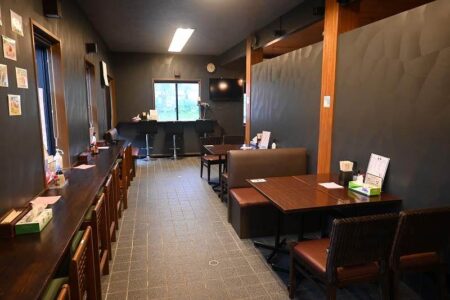
The shop is spacious. Pictured is the table and counter seating area.
-
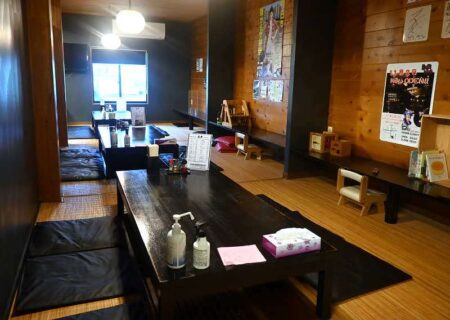
Raised seating in the back where shoes must be taken off.
-

Local children’s drawings hang in the shop.
Like many regional cities throughout Japan, the island’s population is shrinking year by year, and the island is losing its former vitality. Still, “There are many things I want to do,” Yamaguchi says. She was even willing to lend part of her home to a young woman who wanted to open a nail salon, an eyelash extensions shop, an art makeup shop or some similar shop that would contribute to women’s beauty. She is overflowing with endless love for Hachijo Island.
-

Walls of round stones are a tourist attraction on the island. Historically, they were built to protect houses from storms.
-
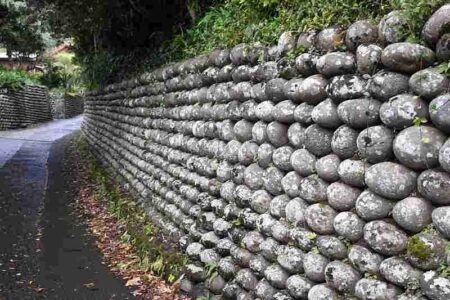
Walls of round stones are a tourist attraction on the island. Historically, they were built to protect houses from storms.
-

Passenger ship bound for Aogashima Island, further south than Hachijo Island.
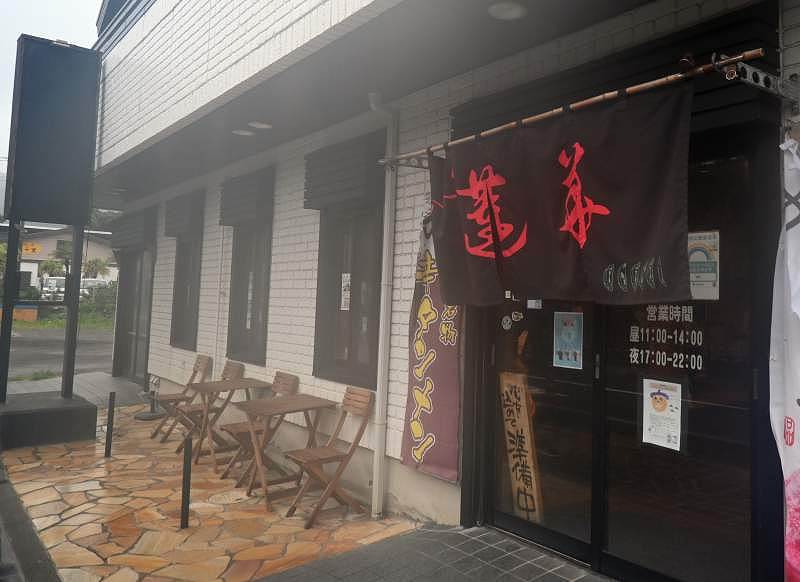
Renge
349-1 mitsune, Hachijo-cho, Tokyo. Open from 11:00 a.m. to 2:00 p.m. for lunch and from 5:00 p.m. to 10:00 p.m. for dinner. Closed on Sundays and holidays. For more information, follow her on Twitter (@renge8jo ).

Futoshi Mori, Japan News Senior Writer
Food is a passion. It’s a serious battle for both the cook and the diner. There are many ramen restaurants in Japan that have a tremendous passion for ramen and I’d like to introduce to you some of these passionate establishments, making the best of my experience of enjoying cuisine from both Japan and around the world.




